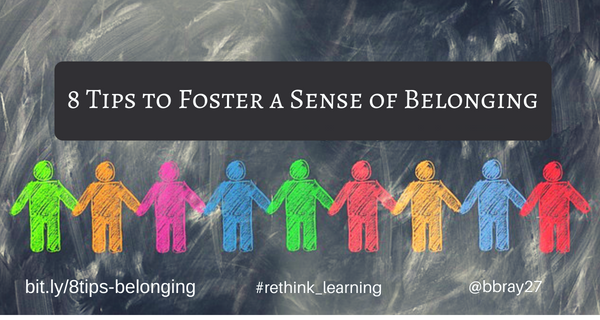
For all learners to grow and flourish, we need to create environments where every child is recognized and validated as a learner with unique talents, interests, and beliefs. A culture that values every learner will empower them to discover the joy and purpose of learning. However, building this culture doesn’t happen overnight.
We need to unlock the learning by recognizing the key constraints that keep our kids from reaching their full potential as learners.
The key constraints that might inhibit learning and a sense of belonging include:
Compliance. When learners feel uncomfortable or are not sure about something, they tend to go back to what they did before and resist new challenges and ideas.
Low Self-Esteem. Learners may feel insecure by being concerned about losing face, being uninformed or feeling not particularly smart. This could also impact how they relate to others.
Fear of Failure. Learners may be afraid to take any risks and tend to seek ways to avoid the embarrassment that they believe happens from failure.
Secrets. Learners come to school with issues at home, with family, or with peers. Some secrets are big and may be difficult to talk about. These secrets probably impact how they feel about themselves and others.
These constraints could be the reasons why some kids have trouble succeeding in school. I believe it is important to take at least two weeks at the beginning of school to get to know your kids. Creating a culture of learning is about developing relationships based on trust and respect. Each child needs to have a sense of belonging in the classroom community and to feel that you and others in the class care about them before you jump right into academics. For some kids, you may find it will take longer to build that relationship especially if they hold on to some secrets that are harming them or cannot open up to share their feelings with you. The following tips may help your learners feel like they belong and want to participate in the class community.
8 Tips to foster a sense of belonging:
- Introduce you. Send an email, note, or a link to your website or blog to your parents to introduce you to their family.
- Make it personal. Include a fun picture that includes your family members, pets, or you doing your favorite hobby. Write a personal note about what your class is going to be like this year along with contact information.
- Know their names. Get a list of your children’s names with pictures before the first class and memorize their names.
- Greet each child. Stand outside the door, greet each child and say their name while shaking their hands. You can even come up with a fun way to make it more personal by creating your own special handshake that you want the kids to memorize.
- Create Outside Inside. Have each child create a drawing or write a reflection of themselves. Ask them to write on the left side what people see and know about them. On the right side, ask them to write what they believe about themselves that others may not know.
- Encourage voice. Invite your learners to brainstorm together what they believe is their Bill of Rights and Rules for the classroom. Ask your kids to come up with their own handshake to teach you. Share your stories of how you learned from failure. Encourage learners to be open to voice concerns so they can learn from mistakes instead of feeling like a failure.
- Provide journals. Give learners a journal so they can reflect on their feelings, how they learn or have trouble learning, and how they interact with others in the class. Make sure they know the journals are for them only and it is up to them if they want to share them with anyone even you.
- Schedule meeting times. Invite each learner to schedule times on the calendar for you to meet one-on-one with each of them to reflect on their Outside Inside and, if the learners are willing to share their journals.
These are just a few tips to start building a positive culture and can be adapted for any age. The idea is to develop relationships based on trust and respect. There are other tips but thought I’d start with these first. I’ll be adding future posts with other tips for culture building and socio-emotional learning activities. I welcome any comments or tips.
*****
Interested in checking out more of the Rethinking Learning podcasts and reflections, click on the podcast tab at the top, the logo below, or go to https://barbarabray.net/podcasts/
For more information about Barbara’s book, Define Your WHY, go to this page or click on the image of the book for resources, questions, and links.





[…] compassionate classroom builds a sense of belonging that is also a responsive community. A morning meeting is an engaging way to start each day and […]